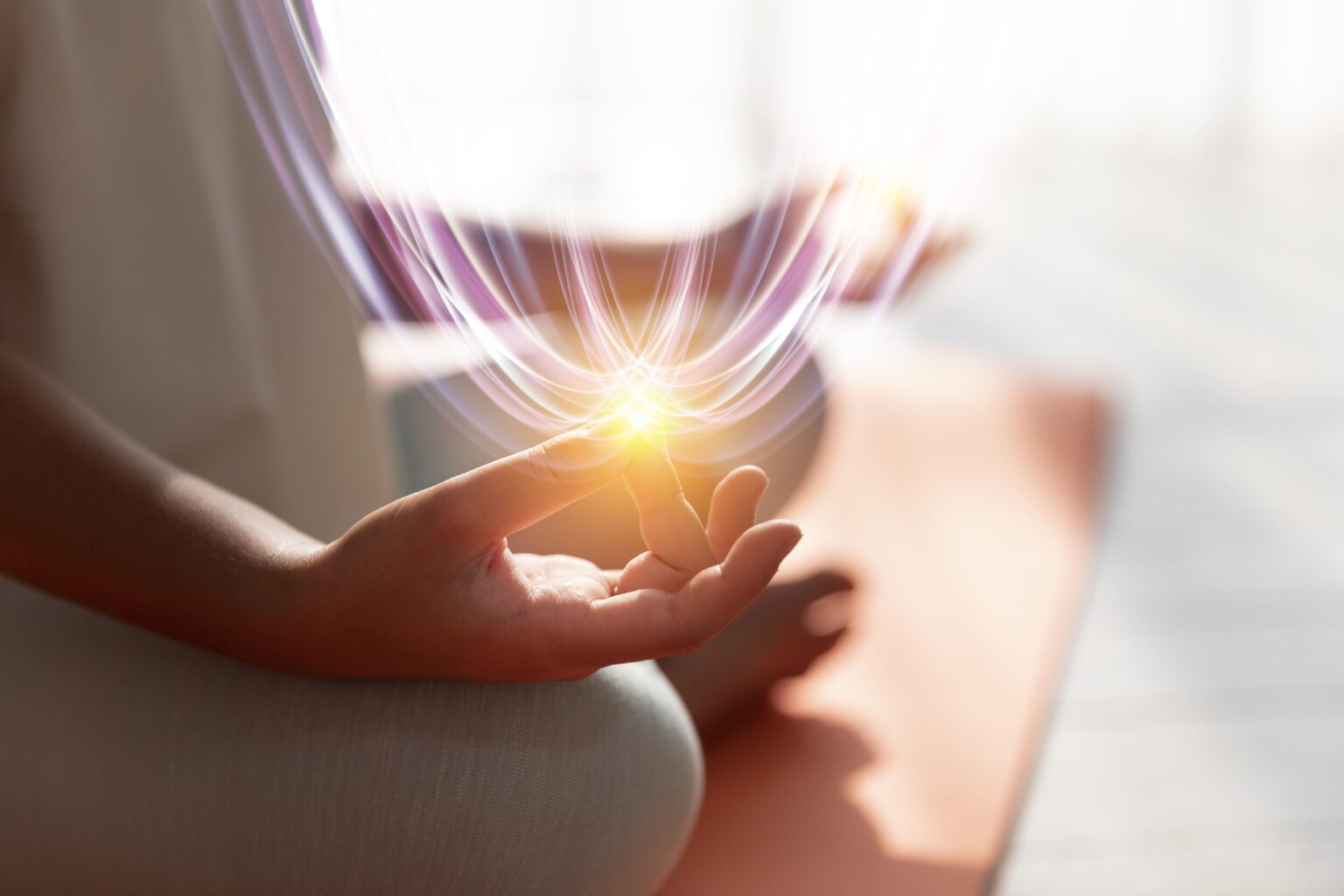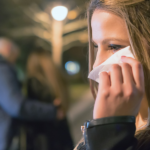Energy healing is a holistic approach to well-being that seeks to balance the energy systems within the body, promoting physical, emotional, and spiritual healing. However, while some people are well-versed in the principles of energy healing, there are a few lesser-known facts that can deepen your understanding of this practice.
Practitioners of energy healing believe that imbalances or blockages in this energy system can lead to physical, emotional, and spiritual problems. The goal is to restore balance and harmony to this energy system, which is believed to promote healing and well-being.
What is Energy Healing?

Energy healing is a holistic and complementary approach to health and well-being that is based on the concept that there is a vital life force or energy that flows through the human body. It is believed that disruptions or imbalances in this energy can lead to physical, emotional, or spiritual issues.
Energy healing practices aim to restore balance and harmony within this energy system to promote healing and overall wellness.
The fundamental idea behind is that by working with the body’s energy, practitioners can help the body’s natural healing processes, reduce stress, alleviate pain, and address various health issues.
While there are various techniques and modalities within the field of energy healing, the common thread is the belief in the existence of an energy system within the body that can be influenced and adjusted to support well-being.
10 Interesting Facts about Energy Healing

1. Energy Healing is based on scientific principles
This proponents argue that it is rooted in the principles of quantum physics, which explore energy interactions at a subatomic level. They contend that energy fields in the body, such as electromagnetic fields, can influence overall well-being.
This is based on energy fields or chakras.
2. Helps to heal physical and emotional traumas
Energy healing is believed to heal physical and emotional traumas by rebalancing the body’s energy systems, like chakras or meridians. Proponents suggest that removing blockages and restoring vital energy flow promotes relaxation, reduces stress, and aids natural healing.
3. Energy healing is accessible to everyone
People often consider it accessible to everyone because it typically doesn’t require expensive equipment or specialized training. Many techniques individuals can self-administer or learn from practitioners, books, or online resources, making them available to a wide range of people.
Additionally, it can complement traditional medical care, giving individuals the option to explore alternative methods for promoting well-being.
4. It is Painless and has no negative side effects
Methods often describe themselves as painless, with many proponents claiming no negative side effects. This makes them an appealing option for people who seek alternative or complementary approaches to well-being. However, you should critically approach these claims, as limited scientific validation supports such assertions, and individual experiences may vary. While people generally tolerate energy healing well, results may differ.
5. Spiritual healing works with any type of healing
Spiritual Healing is a holistic approach that is believed by some to work in conjunction with various forms of healing, including traditional forms of therapy.
Proponents suggest that addressing the body’s energy systems and promoting balance, it can enhance the overall healing process and well-being. It is often used in conjunction with other healing modalities, such as acupuncture, massage, or meditation, to provide a comprehensive approach to health and wellness.
6. There are many types of energy-healing
There are several types of practices. Some of the more well-known ones include:
- Reiki: A Japanese technique that involves a practitioner channeling “universal life energy” to promote healing and relaxation.
- Healing Touch: A method that uses gentle touch and energy techniques to balance and align the body’s energy field.
- Acupuncture: An ancient Chinese practice that involves inserting thin needles into specific points on the body to stimulate energy flow and alleviate various conditions.
- Chakra Healing: Focused on the body’s energy centers (chakras), this practice aims to balance and clear energy blockages in these areas.
- Qigong: A Chinese discipline that combines movement, meditation, and breathing exercises to cultivate and balance energy (Qi) within the body.
- Pranic Healing: Based on the concept of “prana” or life force energy, practitioners use specific techniques to remove energy blockages and restore vitality.
- Crystal Healing: Involves the use of various crystals and gemstones to balance and channel energy within the body.
- Sound Healing: Uses sound vibrations, such as singing bowls or chanting, to influence energy flow and promote relaxation.
- Therapeutic Touch: A technique that involves the practitioner using their hands to assess and manipulate the body’s energy field to support healing.
Each of these modalities has its unique approach and methods, but they share the underlying concept of working with the body’s energy systems to promote physical, emotional, and spiritual well-being. Maintaining energetic well-being at home is possible through various self-care practices and lifestyle choices.
7. You can maintain overall well-being at home
Meditation and Mindfulness: Regular meditation and mindfulness practices can help you balance and clear your energy, reduce stress, and promote a sense of calm and focus.- Breathwork: Techniques like deep breathing and pranayama can help regulate your energy and increase vitality.
- Self-Reiki: If you’re trained in Reiki, you can perform self-Reiki sessions at home to balance your energy.
- Yoga and Tai Chi: These practices involve movement, breath, and meditation, promoting the flow of energy and enhancing overall well-being.
- Sound Therapy: Listening to calming music or using singing bowls can help balance your energy and reduce stress.
- Aromatherapy: Essential oils, diffusers, and scents can positively influence your emotional and energetic state.
- Healthy Diet: Consuming a balanced diet with fresh fruits, vegetables, and adequate hydration supports your energy levels and overall health.
- Energetic Clearing: Regularly decluttering your physical space can have a positive impact on your energy. Using sage or palo santo for smudging is a traditional practice believed to clear negative energy.
- Grounding: Spend time in nature, walk barefoot on the earth, or practice grounding exercises to connect with the Earth’s energy.
- Positive Thinking and Affirmations: Cultivating a positive mindset and using affirmations can enhance your energetic well-being.
- Sleep and Rest: Prioritize getting adequate sleep and rest to recharge your energy.
- Hydration: Drinking plenty of water helps to maintain the flow of energy within your body. Maintaining energetic health at home is a holistic endeavor, and what works best for you may vary. It’s essential to listen to your body and explore different practices to find those that resonate most with you.
8. Helps to give Relaxation and Mental Clarifications
Proponents claim that it can indeed provide relaxation and mental clarity. They believe that addressing and balancing the body’s energy systems, can reduce stress, release tension, and promote a sense of calm and well-being. This, in turn, may lead to mental clarity and improved focus.
You can attribute the relaxation and mental clarity achieved through energy healing to a combination of factors, including the placebo effect, the therapeutic relationship with the practitioner, and the relaxation response.
9. Cultures have studied the body’s energy centers for thousands
Cultures around the world have explored the concept of the body’s energy centers for thousands of years.
Ayurveda: This ancient system of medicine from India recognizes the importance of energy centers called “chakras.” Ayurveda emphasizes the balance of energy to maintain overall health and well-being.
Traditional Chinese Medicine (TCM): TCM is based on the concept of energy flow through meridians and the balance of Yin and Yang energy. Practitioners use acupuncture and acupressure to influence these energy channels for healing.
Indigenous Healing Practices:
Indigenous cultures worldwide, including Native American and Aboriginal Australian traditions, emphasize the connection between the physical, spiritual, and energetic aspects of health. Practices like smudging, energy cleansing, and energy healing are essential to their traditions.
- Japanese Reiki: Reiki, a practice originating in Japan, focuses on the flow of universal life energy (“ki” or “qi”) to promote healing and balance. It includes hand positions and energy channeling.
- Tibetan Buddhism: Tibetan Buddhism acknowledges the importance of energy centers and channels in the body. Practices like Tibetan Singing Bowl therapy and Tsa Lung aim to balance and clear energy.
- Ancient Egypt: Ancient Egyptian cultures practiced methods related to energy centers and the flow of vital force.The concept of the “ka” represents the individual’s life force and energy.
These cultures have explored the body’s energy centers as part of their holistic approach to health, believing that physical, emotional, and spiritual well-being connect with each other. While modern science may not always validate these concepts, these ideas have significantly influenced alternative and complementary healing practices.
10. Helps to cleanse the aura/energies around you
Energy healing practitioners often claim that their techniques can help cleanse the aura or energies around an individual. People believe the aura is an energetic field that surrounds a person, reflecting their emotional, mental, and physical well-being. Energy healing methods like Reiki, chakra balancing, and aura cleansing aim to remove blockages and negative energy, promoting a more harmonious and balanced aura.
Conclusion
In conclusion, energy healing is an ancient and diverse practice that seeks to enhance physical, emotional, and spiritual well-being by working with the body’s energy systems. While many report positive experiences, it’s essential to approach these techniques with both critical thinking and an open mind. Scientific validation for many claims remains limited, and individual responses can vary. Energy healing can complement traditional medical care by offering relaxation, stress reduction, and balance, but it should not replace evidence-based medical treatment.












